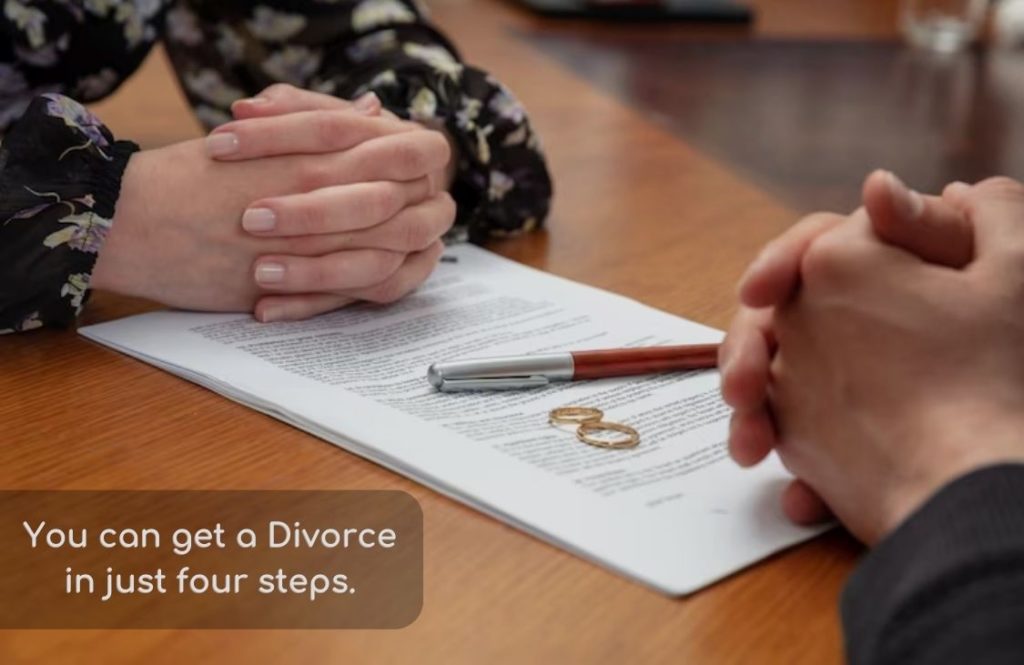
Share
HOW TO GET A CHEAP DIVORCE IN FOUR SIMPLE STEPS

Dina Haddad
Founder & Attorney Mediator
I’m Dina Haddad, a family law attorney-mediator in California. I’m so tired of couples not having a process that’s easy to complete their divorce. They are getting lost, wasting time and money, and beyond frustrated with their results.That’s why I created TheCompleteDivorce. I took my successful mediation practice and condensed it into an affordable and winning program.
There are four steps to obtaining a divorce in California. All of these you can conveniently handle through our program, The Complete Divorce.
Let’s get started in four Steps:
- File for divorce,
- Disclose your financials to your spouse,
- Settle your divorce issues – the division of property and debts, spousal support, and if you have children, child custody and child support; and
- Get a divorce judgment.

Ca Divorce Process
Let’s discuss how you start a legal divorce in California.
Step One: Starting your Divorce
You start your divorce by filing a petition in the family court in your county. I discuss the steps to completing these initial court papers in more detail in “Starting a Divorce,” in our video tutorials.
Ways To Terminate Your Marriage:
In your petition, you’ll select how you’ll terminate your marriage. In California, there are three ways:
- Annulments are strictly reserved for marriages that fall under legally accepted reasons, such as incest, bigamy, or underage marriage. Religious reasons do not qualify.
- A dissolution of marriage or as we know it, divorce, is the most common way. There are two legal grounds for divorce: irreconcilable differences and permanent legal incapacity to make decisions. Irreconcilable differences are the most common ground and probably apply to 99% of all cases.
- The third way to end your marriage is a legal separation. Legal separation requires a court filing and has the same steps as a divorce. But unlike a divorce, you’ll still be married when you finish. You do not need to file for a legal separation before you file for a divorce and you are not considered legally separated if you live separately from your spouse. If you are filing for a legal separation, follow the same process as divorce.
Residency Requirement:
Except for legal separation, in order to file for divorce in California, at least one of you needs to be a resident of California for the last six months and in your county for the last three months. If you have children, your children must also have lived in California for the last six months for the court to have the authority to make child custody orders in your case.
Step Two: Exchanging Financials
The second step is to disclose all financial information to your spouse. Part of that disclosure will be completing the Declaration of Disclosure and exchanging them with their spouse at the start of your case and then again at the end, unless and exception applies. If you fail to complete these forms, you cannot finish your divorce and the court can penalize you for leaving something off your forms.
Step Three: Negotiate an Agreement
After you have completed at least your first set of disclosures, the third step is to resolve your divorce issues; division of assets and debts, child custody, and child and spousal support.
Your best option here is to negotiate an agreement with your spouse, instead of going to court. In our video tutorials, I go over each of these issues, assets and debts, child custody, child support, and spousal support, in detail.
Step Four: Final Agreement
Once you have successfully negotiated an agreement, you are ready to submit your agreement to the court to obtain a divorce judgment, the last step. If your spouse has refused to participate, instead of an agreement, you’ll submit a proposed order. At this point, if you haven’t reached an agreement, you have the option to proceed to trial to resolve those issues. Based on the evidence you present, the judge will decide the unresolved issues and those decisions will become your divorce judgment.
I explain these differences and how to submit your agreement in our video tutorial, “Final Agreements”
Work through these steps with your spouse and you’ll save time, money and avoid court. If your spouse isn’t involved, your spouse might doubt the agreement is in their interests, and at the end, your spouse won’t sign. If that happens, you might have to start over. You can also reach out to us at TheCompleteDivorce. Check out our packages that include time with our expert CA divorce mediators.
Now, it’s crucial that you watch these courses in order before you start. In each lesson, I go over each of these steps in detail, breaking down the law and how to complete these steps successfully. If you go out of turn, rush, or skip material, you risk missing out on information you need to finish correctly. Remember, these lessons contain more than enough information to complete your divorce.
But, it’s not legal advice. I also cannot go into every legal scenario or exception in these lessons. Some divorce situations are complicated. It could be the law as applied to your case or your specific situation. If you run into a complicated scenario or need help, reach out to us. The extra help will be well worth it.
Before you go, consider if we can help you. We have helped thousands of couples in California. Our guided DIY divorce is successful and cheap! Our services are all 5-star!






